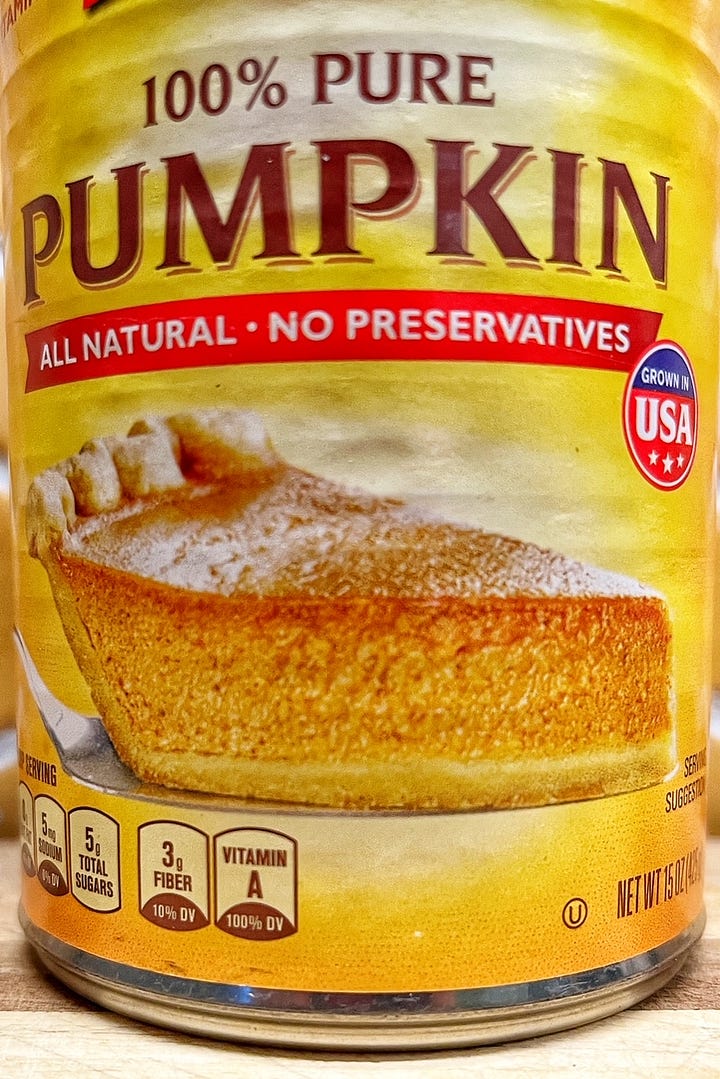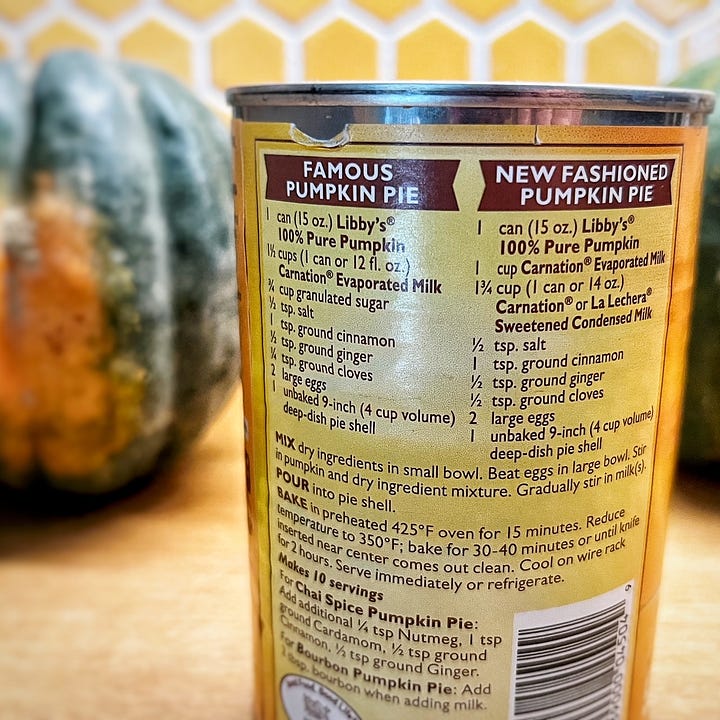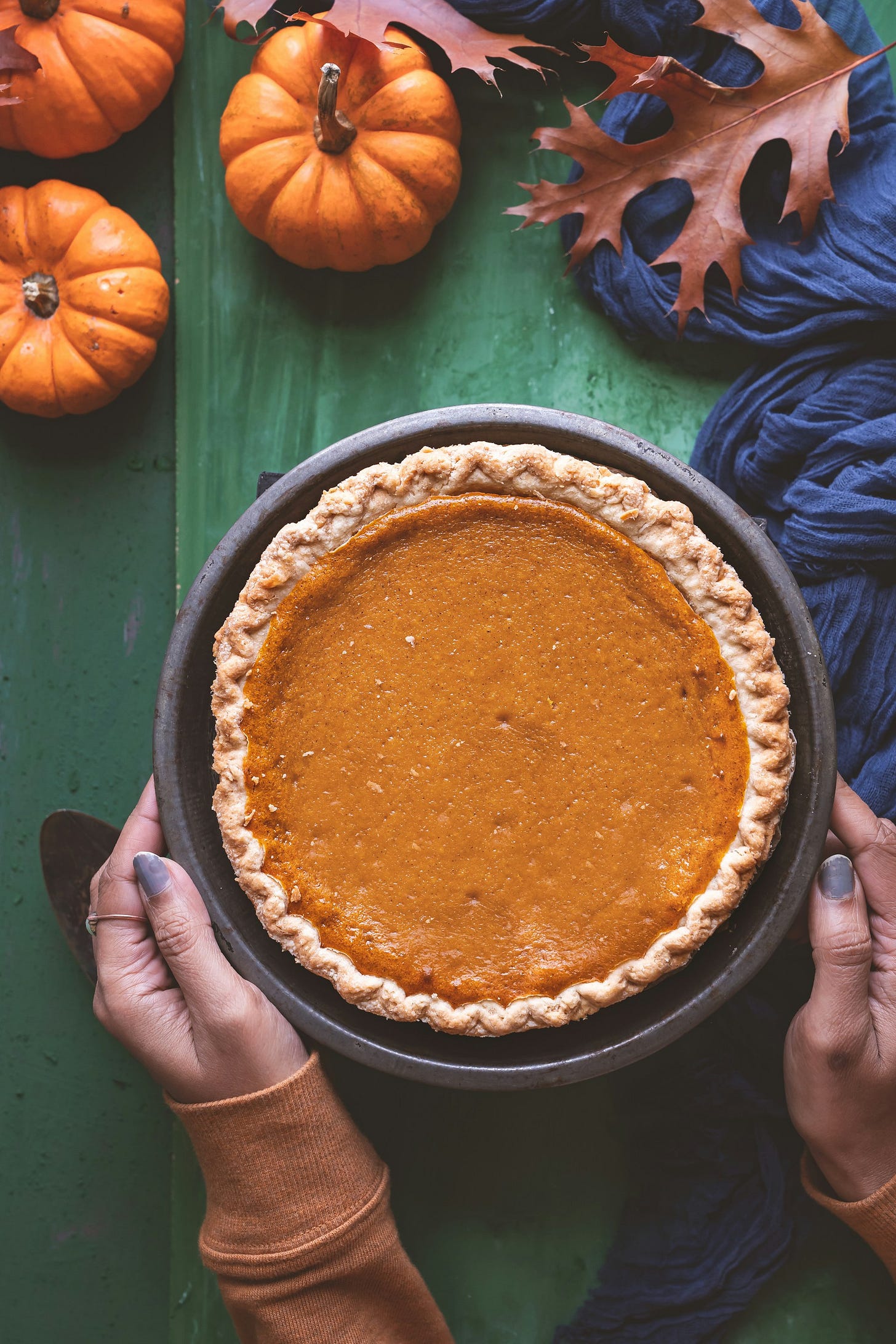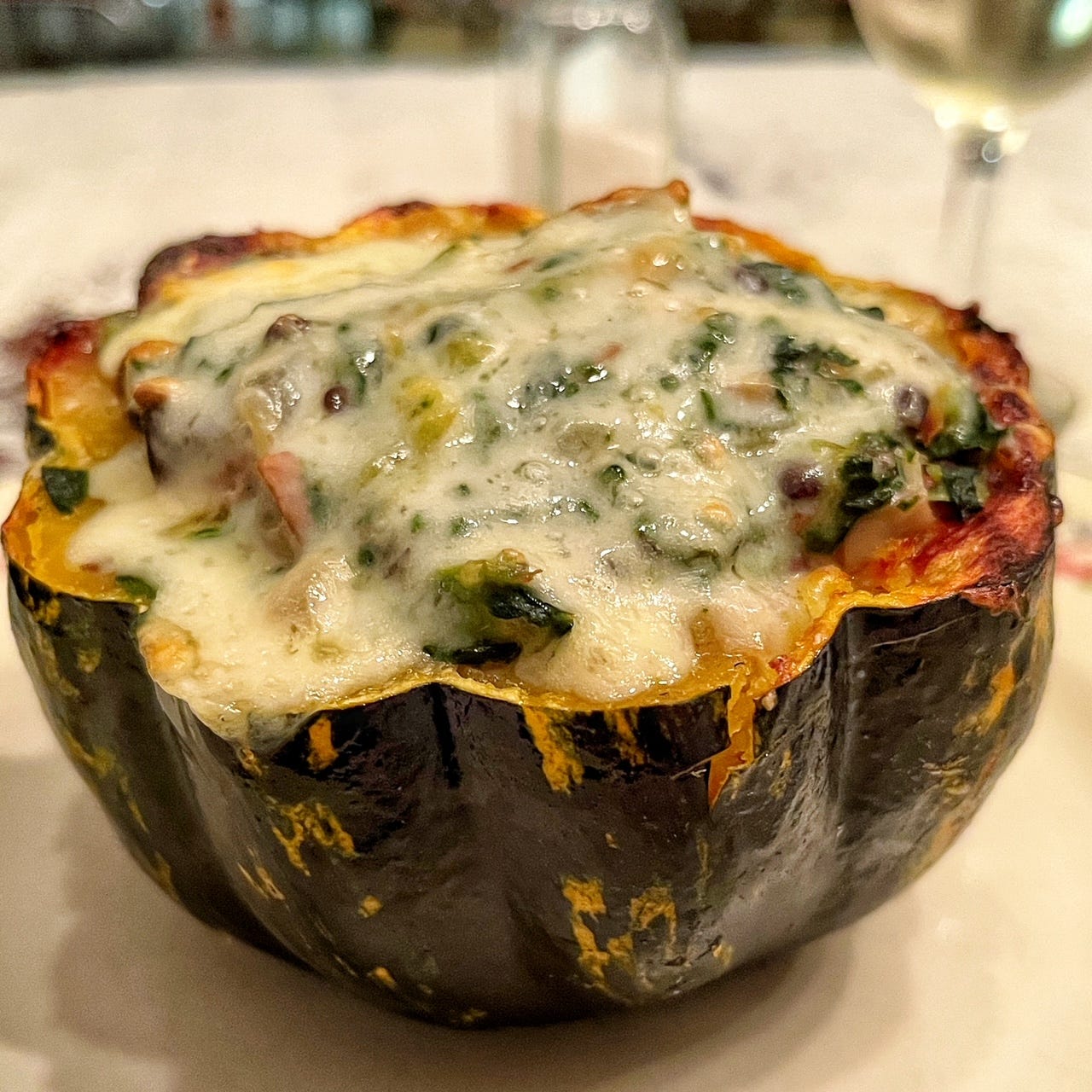Dear climate culinarians,
Have you ever looked at a grocery staple as if you’ve never seen it before? That’s what I did with a can of pumpkin. And lo and behold, I discovered a 1930s cooking queen and her truly incredible story.
Food for thought: Who invented pumpkin pie?
I haven’t found a pumpkin can that does not feature a recipe for pumpkin pie. This all started with Libby’s: The company claims to be the first one to include recipes in their advertisement. And they had a celebrity chef at their side: Mary Hale Martin.
Her 1934 cookbook is simply titled “My Best Recipes”. To get away with that, Hale Martin must have been an icon like Martha Stewart, I thought. When I researched Mary Hale Martin’s story, I wasn’t surprised to discover she had advertisement deals, too. In late 1923, Libby’s printed ads in magazines like Women’s Home Companion, offering Hale Martin’s advice to home cooks. Thousands of people responded. And they got a personal letter in return. Soon, there were radio shows featuring Martin Hale, and fans all over the country.
She apparently continued her deal with Libby’s over decades. I found an undated advertisement brochure titled “Mary Hale Martin says: Holidays are Party Days”. It looks like from the 1950s. She must have had an interesting life, developing recipes and party menus, sharing kitchen tricks and finding solutions for her readers’ domestic dilemmas.
But most of all, Libby’s printed Mary Hale Martin’s recipe for pumpkin pie on the back of each can.


When the company changed the recipe a few years ago, people protested. The result: Now there are two versions of pumpkin pie on the back of these cans! Mary Hale Martin determined what we have been eating as a Thanksgiving dessert for decades. Someone should write her life’s story!
If only that was possible.
Here’s the catch: Mary Hale Martin never lived. Even though her fans believed she was real, and some still do.
According to an article in Bon Appetit, for example, Libby’s had “hired Mary Hale Martin to start a home economics department and promote recipes for its various canned products”. That’s not true. While the goal indeed was promoting canned food, Hale Martin was never hired by anyone.
She was the creation of an advertising company called J. Walter Thompson, as documents I found at the Library of Congress show. In a letter from January 3rd, 1924, the advertising pros are enthusiastic:
„Returns are already received in the new „service“ type of advertising introduced into the 1924 copy for Libby products. In fact, at the time of writing (December 21), although the first magazine to contain these new advertisements has been on the news stands only one day, several dozen inquiries have already been received, showing that the writers must have been stirred to instant action!“
And just a littler later in 1924, another J.W.T. newsletter says:
“It would be hard to find anything more brimful of real “heart interest” than the letters received in answer to the “Write Me” column in the new Libby service type of advertisement described in newsletter #8 (Meet Mary Hale Martin).”
Mary Hale Martin’s success created a problem, as the advertisers soon have to admit.
Only half of the readers’ questions could be answered with form letters. They needed an individual reply. And the first ads alone brought 2364 letters. So who wrote to all those women, when Mary Hale Martin didn’t exist?
The head of Libby’s new-ish domestic science department did. A real woman. I hope she won’t be forgotten. Her name was Dorothy Knight.
Reading Room: Regenerative pumpkin farming and great female chefs … some real, some not
I love to share what I’ve been reading - and also what’s in my “books to read next” stack. And things get real in the future, it seems.
Illustration: Bianca Van Dyk via Pixabay
How the pumpkin gets into the can
Most of the canned pumpkin comes from in Illinois. Because pumpkin farmers there feel the consequences of climate change, some try regenerative farming techniques. In this AP story from 2022, you can read about the results so far, which may well have an impact on pumpkin pie. Plus, you get to see the type of pumpkin that goes into the can: the Dickinson.
The most famous kitchen queen who never lived
“Finding Betty Crocker” by Susan Marks. — Remember how I said that someone should write Mary Hale Martin’s biography? Susan Marks had the brilliant idea to write about Betty Crocker, Mary’s fellow fictitious, recipe-slinging food company spokesperson. Betty “worked” for General Mills.
A book by – real! – female cooks I’m looking forward to
“The League of Kitchens Cookbook: Brilliant Tips, Secret Methods & Favorite Family Recipes from Around the World” – by Lisa Kyung Gross and the Women of the League of Kitchens Cooking School, with Rachel Wharton (available from November 12). — I’m so thrilled that League of Kitchens made a cookbook! The NYC-based organization brings foodies into immigrants’ home kitchens to cook together. Many years ago, I booked a class with them and learned about the food culture of Lebanon while making yogurt, then labneh, and sharing a meal. I still make my own yogurt.
Discuss all this … over stuffed pumpkin squash
I’m not a ficticious cook, but I found that a meal can dabble in make-believe - and still exist: This dish looks quite fancy, but in reality, it’s easy to make. It also lends itself to prepping in advance (roast the squash, cook lentils, sautee veggies …) – and you can use the squash as a vessel to magically let leftover lentils or veggies disappear from your fridge.
Stuffed Acorn Squash
Feeds 4 people
Ingredients:
2 acorn squashes
4 Tbsp olive oil (divided)
1/2 tsp salt
1/3 cup dry lentils
1/2 bag fresh spinach leaves (that’s the minimum, more if you like!)
1 small onion
6 mushrooms
2 cloves garlic (or ½ tsp powdered garlic, if preferred)
1/2 tsp salt
1 Tbsp nutritional yeast
2-4 Tbps cream, to taste
A few grinds of black pepper, to taste
½ cup grated cheddar
Make it:
Line a large baking try with baking paper. Pre-heat oven to 400°F.
Put lentils and 1 cup of water in a small pot on high heat. Bring to a boil, then reduce heat to low and simmer for 30 min. Taste if they need more time (older lentils can take up to 10 min longer). Drain and set aside.
Meanwhile, put acorn squashes on work surface, stem-side up. You will cut each one in half horizontally. Either keep in mind where the cutting line will (roughly) be, or make two or three markings with a small knife. Then get a large knife, put one acorn squash after the other on its side and cut. If the upper parts have stems, remove those, too.
Test if the acorn squash halves will stand, with the cut side up. Keep in mind that these will be your casseroles, filled with hot veggies. If they are wobbly, cut a little bit of the underside so it gets a straight part.
With a spoon, remove the seeds. You can save them for making pumpkin seed snacks if you like. Back to the acorn halves: Brush insides and cut surface with 2 Tbsp oil, sprinkle salt on it. Place all acorn squash halves, cut side down, on baking tray. Bake for 30 min.
Meanwhile, mince the onion and garlic and slice the mushrooms. In a large skillet, heat 2 Tbsp olive oil on high until it shimmers. Add onions and reduce heat to medium-high. Sautee until onions look slightly translucent, about 3 min. Add mushrooms, sautee another 5 min. Add handfuls of spinach and stir until it wilts, then keep adding more. With the last handful of spinach, add the garlic and sautee for a minute. Add lentils, nutritional yeast and 1/2 tsp salt, then the cream, and stir to combine well. Set aside to cool slightly.
Take acorn squash halves out of the oven and leave them on the baking tray. Carefully turn them, so that the opening is facing up. With a fork, carefully loosen the squash flesh, but don’t hurt the skin. Fill each halve with 3 Tbsp of the veggie-lentil-mix, then gently combine it with the squash flesh, moving up a few pieces of squash. When finished with all the halves, start adding more veggie-lentil-mix until all the squashes are equally filled. They don’t need to be filled to the brim! Grate cheese and sprinkle over the stuffed acorn squashes. Return to the oven and bake for another 15 min.
You can prep both the acorn squash and the filling ahead of time and chill it before use. Then just need to sprinkle everything with cheese and get it into the oven. Bake for about 30 min.
I believe a shared meal is the best opportunity to talk about climate solutions. And about food, of course. So I hope you’ll enjoy these squashes in good company.
Read, write, eat, repeat!
Petrina
Climate Culinarians is a project by me, Petrina Engelke. I write about climate, food and the U.S., and I help other writers turn their ideas into a book people want to read. In other words: I’m a journalist and a book coach. If you’re a writer, too, check out my other newsletter, How to Write About Climate and Food.





